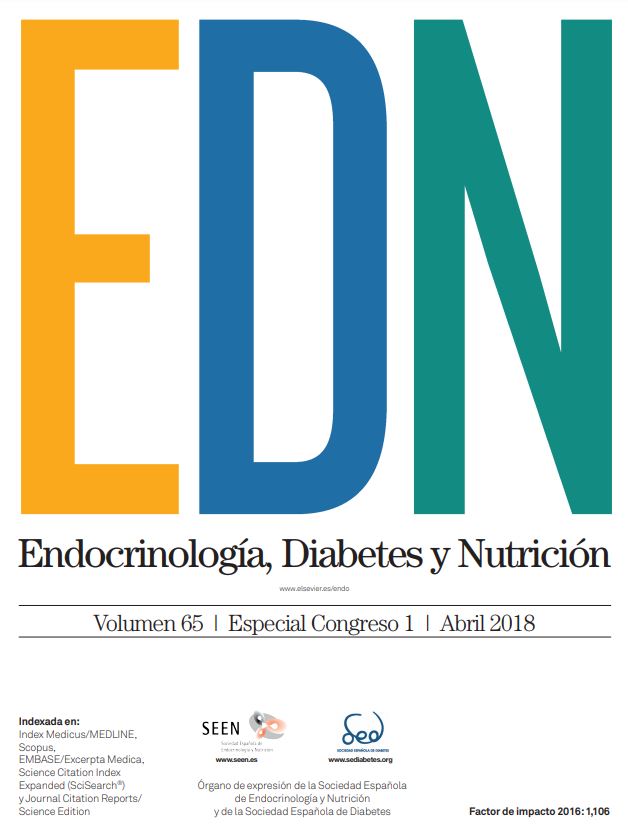O-033 - LIRAGLUTIDE EXERTS BENEFICIAL ACTIONS IN THE LIVER, THE PANCREAS AND MODULATES MICROBIOTA IN AN ANIMAL MODEL OF OBESITY AND PRE-DIABETES
aHospital Regional Universitario Carlos Haya, Málaga. bHospital Clínico Universitario Virgen de la Victoria, Málaga.
Introduction and objectives: Liraglutide is a synthetic GLP-1 analogue that is clinically used for the treatment of type 2 diabetes (Victoza®) and overweight/obesity associated to at least one weight-related comorbid condition (Saxenda®). However, its effects in other metabolically-relevant tissues are still unclear. The aim of this study was to analyse the effect of liraglutide on several hepatic parameters related to lipid accumulation and oxidative stress, in GSIS and apoptosis in the islets of Langerhans, and to assess eventual changes in gut microbiota.
Material and methods: We used a mouse model of obesity and pre-diabetes (the C57Bl/6J challenged with a high-fat diet (HFD)). Groups of ten mice were fed a HFD (45% energy from lard) for 25 weeks and subsequently treated with 0.2 mg/kg/day liraglutide for 3 weeks. Then animals were sacrificed and blood, liver and pancreas were extracted for further analysis. During generation of obesity and pre-diabetes and during treatment, body weight and energy intake was monitored as well as glucose tolerance and insulin resistance. Islet functionality was assessed ex vivo by glucose-estimulated insulin secretion (GSIS) experiments. Indeed, islet apoptosis was assessed by caspase-3 immunohistochemistry. Blood and faeces samples were collected before and after treatment. Lipid and hormonal plasma profile was determined by standard biochemical procedures and ELISA assays. Microbiota composition and diversity was analysed by high-throughput sequencing of the 16S rRNA. Fat accumulation in the liver was measured by Oil Red O staining. The following oxidative-stress related parameters were assessed in the liver: oxidized proteins, total thiols, catalase, cytochrome C oxidase, glucose 6 phosphate dehydrogenase, glutation peroxidase, superoxide dismutase 1 and 2, and NAD(P)H dehydrogenase 1.
Results: Mice fed the HFD increased energy intake and developed obesity, together with an abnormal lipid and glucose profile in plasma. Indeed, they became glucose intolerant and insulin resistant. In addition to defective glucose handling, they showed altered GSIS and increased apoptosis in the islets of Langerhans (p < 0.01). In the liver, they developed steatosis, as assessed by lipid staining (p < 0.01), and increased oxidant/antioxidant ratio (p < 0.01). They also showed intestinal dysbiosis. Liraglutide treatment, as expected, decreased food intake and body weight while improving cholesterol, triglycerides and glucose handling (p < 0.001). Interestingly, GSIS was improved (p < 0.05) and apoptosis was reverted in the islets of Langerhans (p < 0.001). In the liver, fat content and oxidant/antioxidant ratio were decreased (p < 0.05). Finally, the analysis of similarities of beta diversity (ANOSIM) revealed that liraglutide altered gut microbiota (p < 0.001), suggesting that these changes could be related to the metabolic improvement.
Conclusions: In an animal model of obesity and pre-diabetes, liraglutide induced beneficial effects in the liver, the pancreas and the microbiota. These findings unravel novel mechanisms by which liraglutide exerts its metabolic actions.
Funding: Instituto de Salud Carlos III (PI13/00309 to FJBS).







